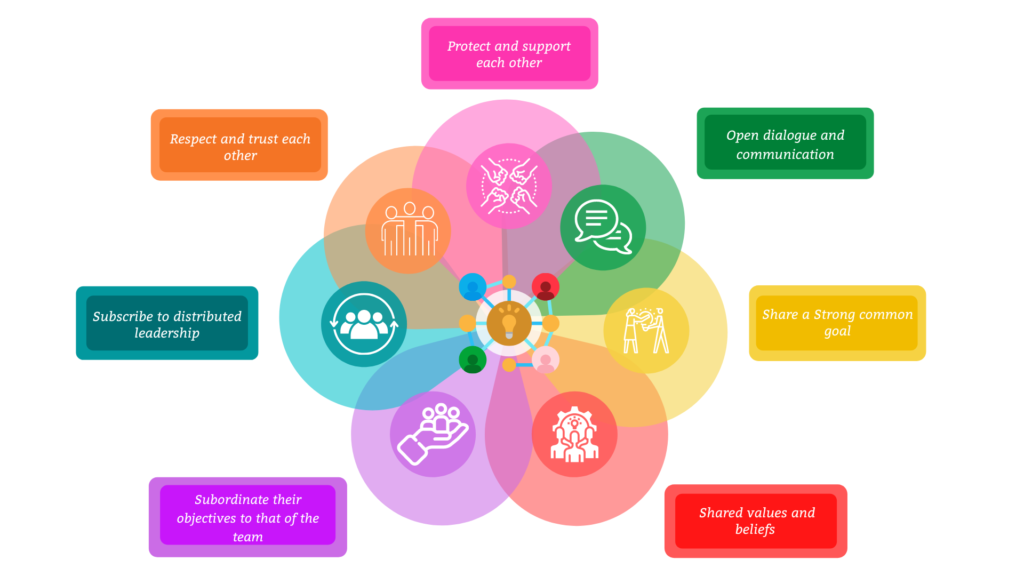There seems to be a consensus that the paradigm of command and control to get things done is falling out of favour. Eisenhower said that you don't lead people by hitting them over the head, as that would be assault and that is not true leadership.
A good manager builds cross-functional teams, let teams decided how to organise themselves, with a focus on value rather than rules and far more collaboration than in the past. With the modern focus more on innovation, we need still need authoritative leadership just not authoritarian leadership. By this we mean leaders who are respected for what they contribute and who can walk the talk. They love developing people, playing the mentor and coach and also cheerleader. They also create stretch for their people to grow. They accept contrarian thinking and encourage people to speak their mind and they celebrate a job done well. They also know how to build great teams.
One place we can learn from to build teams is primitive societies. These societies or tribes need to work together for survival. Manfred Kets de Vries did a study of the Pygmies to glean some team-building lessons from them. Most of this chapter is based on his work. In the Pygmy society:
-
Members respect and trust each other: Given the potential hardships of tribal or survivalist life, survival depends on interdependence. Each person in the group needs to be counted on. Trust is an antidote to rules and regulations.
-
Members protect and support each other: Members of any team should help and support each other. When I need help I should know that there is a team member I can reach out to for help. In any team there will always be conflict, but when the chips are down each team member must be willing to support, protect and defend his group members.
-
Members engage in open dialogue and communication Obedience to authority figures is minimal. Nobody has the right to force someone to do something against his or her will and nobody is afraid to speak their own mind. Disputes are settled informally and constructive conflicts are the norm.
-
Members share a strong common goal: Teamwork is ineffective without mutually agreed goals. Goals give team members a sense of focus and purpose. Motivation flags when the goal is ambiguous or ill-defined.
-
Members have strong shared values and beliefs: This is one form of the glue that binds teams together. Values and beliefs are closely related to purpose, but it goes further by regulating how a team's attitude and behaviour.
-
Members subordinate their own objectives to that of the team: Teamwork represents the balance between the needs of the individual and the needs of the organisation. To be a good team member one has to recognize the limits of one's freedom.
-
Members subscribe to distributed leadership: Pygmy society is characterized by informality. In contrast to other societies there are no ultimate leaders. With no real chiefs and formal councils behaviour is very participatory and egalitarian.
One could argue if Pygmies are so good at team work, why is their society dwindling and not growing and thriving. One of the main reasons is that they don't have an outward focus. The Pygmies have not been very good at adapting to changes in the outside environment. Building bridges with teams outside your own team is critical.
How to apply this to your own teams
Experiment with Scrum and general Agile Principles to apply the lessons from the tribes to your daily work. Scrum depends on five values: commitment, focus, openness, respect and courage which aligns well to what is important to tribal teams.
Scrum also places the focus on progress towards goals. Definitions of Done, Sprint Planning and Product Backlogs help to create the common goal that is so important to teams. Throw in the notion of a True North and align this between teams and you have a solid foundation for aligned team-work across your organisation
The daily stand-ups can and should be used for team members to help each other to reach the team goals. It also fosters regular and open communication. The Retrospectives will help to make the team better if they are conducted in an open and transparent way.
Scrum teams are also very egalitarian and leadership is distributed. Within a Scrum team there are no hierarchies or sub-teams and roles are very limited. Scrum Teams are cross-functional. Team members have all the skills necessary to create value for each Sprint. Sprint teams are self-managing, meaning they internally decide who does what, when, and how.
Another Agile construct like Spotify's guilds, unconferences, meet-ups, etc. can be added to Scrum just to make sure the team does not become myopic but stays aligned and open to external influences.
Not all groups are teams. Team members share leadership roles, individual and mutual accountability. Teams have a purpose that the team itself delivers, work products are collective, discussions are open-ended and active problem solving is encouraged, performance is measured by directly assessing collective work products and they discuss, decide and they do real work together.
Scrum ticks all the boxes of tribal societies and of management theorists. Scrum is simple. Try it as is and see if it helps your team to achieve its goals and create value. But just as important build a team that people love to be part of.

Further reading
De Vries, Manfred FR Kets. "High-performance teams: Lessons from the pygmies." Organizational Dynamics 27.3 (1999): 66-77.
De Smet, Aaron, Michael Lurie, and Andrew St George. "Leading agile transformation: The new capabilities leaders need to build 21st-century organizations." McKinsey & Company (2018).
Katzenbach, Jon R., and Douglas K. Smith. The discipline of teams. Harvard Business Press, 2008.
Schwaber, Ken, and Jeff Sutherland. "The Scrum Guide." (2020). Available at: https://scrumguides.org/scrum-guide.html
Back to the Table of Contents of our Techno Fluency book